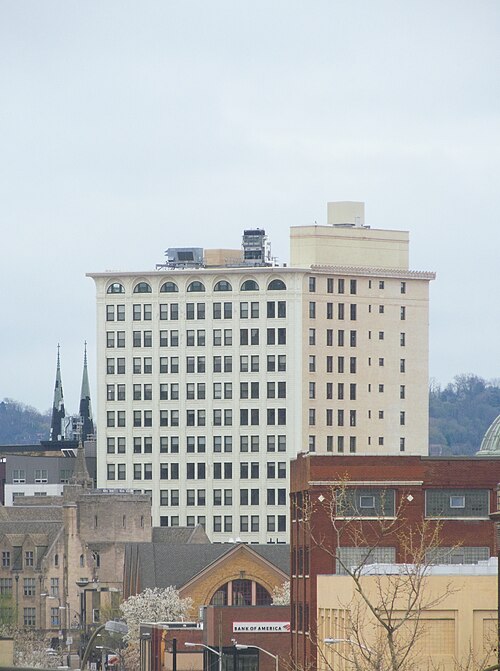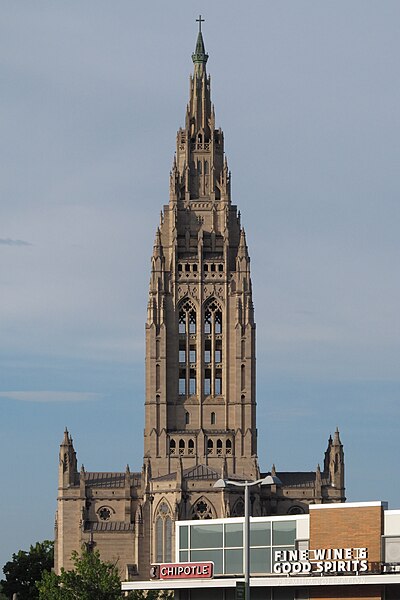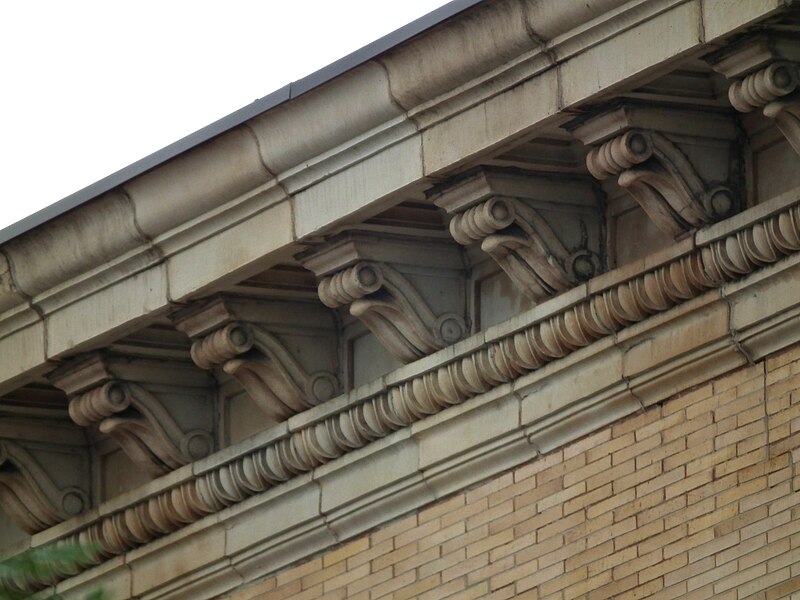
A long view down Baum Boulevard. This is the only remaining skyscraper in East Liberty. Another of about the same dimensions, designed by Frederick Osterling, used to stand next to it, but was torn down for a one-storey bank, which in turn was abandoned for years and then torn down for a six-storey apartment block with storefronts—East Liberty’s history as a neighborhood epitomized in one lot. The skyscraper apartment buildings designed by Tasso Katselas in the “urban renewal” years are also gone. This one, designed by Daniel Burnham, has Burnham’s usual elegant classicism. In some ways Burnham was one of the most adventurous architects the United States ever produced, but part of the secret to his success was his ability to use the most modern technology to please the most conservative taste.
Comments











































